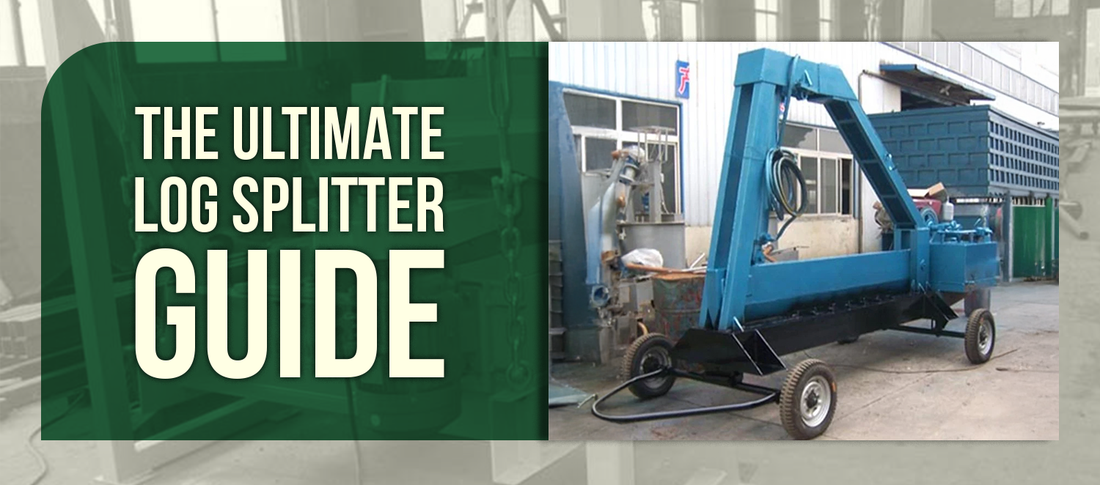
The Ultimate Log Splitter Guide
Master the Art of Efficient Wood Splitting for Your Backyard
Welcome to the comprehensive world of wood log splitting! As dedicated outdoor enthusiasts and backyard specialists, we've encountered countless questions about the fundamentals of efficient wood splitting. One of the most frequent inquiries revolves around understanding the key differences between working with fresh timber versus seasoned wood when using a log splitter. Let's explore this fascinating topic and break down everything you need to know!
Understanding Fresh Wood Characteristics
Fresh timber presents unique challenges that every backyard enthusiast should understand. Newly cut wood retains significantly high moisture content, which directly impacts how the wood responds during the splitting process.
Fresh wood exhibits remarkable flexibility due to its elevated water content, making the fibers more pliable and resistant to separation. This characteristic means that splitting fresh timber often requires substantially more effort than you might initially expect.
The density factor also plays a crucial role. Fresh wood carries considerably more weight and density compared to seasoned alternatives, requiring your log splitter to work with increased force to achieve clean separation through each piece of fresh timber.
However, fresh wood offers distinct advantages for splitting applications. The increased fiber flexibility allows for cleaner cuts without excessive cracking or splintering, and the expedited drying process benefits from the additional surface area exposure during splitting.
The Seasoned Wood Advantage
Seasoned wood represents timber that has undergone natural drying for extended periods, typically spanning several months to a full year. During this maturation process, moisture content decreases dramatically, fundamentally transforming the wood's splitting characteristics.
The most significant distinction between fresh and seasoned wood lies in the splitting behavior. Seasoned wood splits much more readily than fresh alternatives because the dried fibers become more rigid and brittle, allowing force to propagate cleanly along the grain rather than absorbing energy through flexible fibers.
Energy efficiency represents another major advantage of seasoned wood. With reduced moisture content, seasoned wood burns significantly more efficiently than fresh timber, producing more heat output per piece while generating less smoke overall.
However, seasoned wood presents certain challenges. It can be more difficult to locate and purchase, especially in areas with limited local suppliers. Additionally, seasoned wood typically commands higher prices since the extended preparation time and effort involved in proper seasoning adds value to the final product.
How Log Splitters Handle Different Wood Types
Understanding how your log splitter performs with various wood types is essential for achieving optimal results and maintaining your equipment's longevity.
Fresh Wood Splitting Techniques
When working with fresh wood, ensure your log splitter provides sufficient power to handle the increased density and flexibility. Hydraulic wood splitters often require elevated pressure settings, and you may need additional tonnage capacity to effectively process larger, heavier fresh timber pieces.
Consider adjusting your splitter's operational settings to accommodate the increased size and weight characteristics of fresh wood for optimal performance.
Seasoned Wood Processing
Seasoned wood allows your log splitter to operate more efficiently since the dried timber splits more readily. Your equipment won't need maximum force application, which extends the operational life of your wood log splitter while reducing maintenance requirements and operational costs.
The predictable splitting behavior of seasoned wood makes it ideal for consistent, reliable processing sessions in your backyard workspace.
Recommended Professional Equipment
For serious backyard wood processing, consider investing in professional-grade equipment that handles both fresh and seasoned wood with exceptional efficiency.
Browse EquipmentEssential Tips for Optimal Wood Splitting
Whether you're processing fresh or seasoned wood, these professional techniques will help you achieve the best possible results.
Select Appropriate Equipment
Choose a log splitter with adequate power for your specific wood type. Fresh wood typically requires higher tonnage ratings, while seasoned wood can be processed effectively with standard equipment configurations.
Prepare Your Workspace
Before beginning any splitting session, ensure your wood is properly prepared. Cut timber to appropriate lengths and remove any debris or foreign materials that could interfere with the splitting process.
Apply Proper Technique
When operating your wood log splitter, maintain consistent technique and ensure proper wood alignment. This approach guarantees clean, even splits while maximizing safety during operation.
Safety Equipment
Wood splitting can present various hazards, so always wear appropriate protective gear including safety glasses, gloves, and sturdy footwear when operating your equipment.
Final Thoughts
Now you have comprehensive knowledge about the differences between splitting fresh wood and seasoned wood using professional log splitters. Both wood types offer distinct advantages and challenges, and understanding these differences helps you select the appropriate wood type for your specific needs while achieving optimal results from your wood log splitter.
Whether you're processing fresh timber for immediate projects or working with seasoned wood for maximum efficiency, the right equipment and techniques will ensure successful wood splitting sessions in your backyard workspace.
For questions about wood log splitters or to learn more about our professional equipment selection, don't hesitate to contact our backyard specialists. We're dedicated to helping you find the perfect wood log splitter for your specific requirements and providing expert guidance for all your outdoor project needs.





